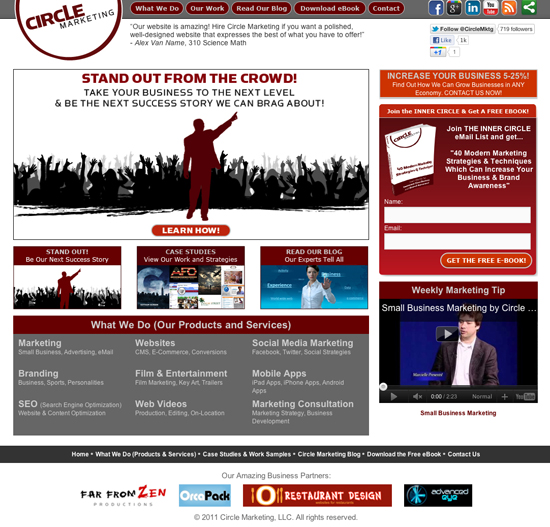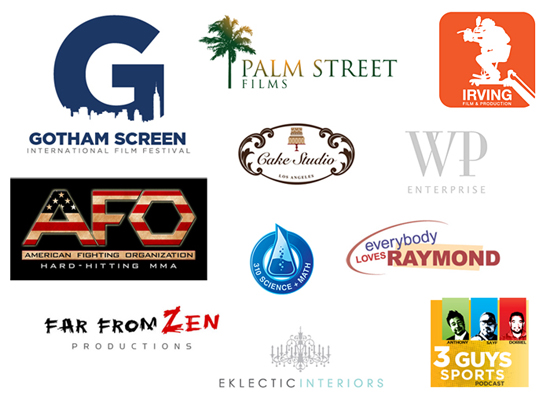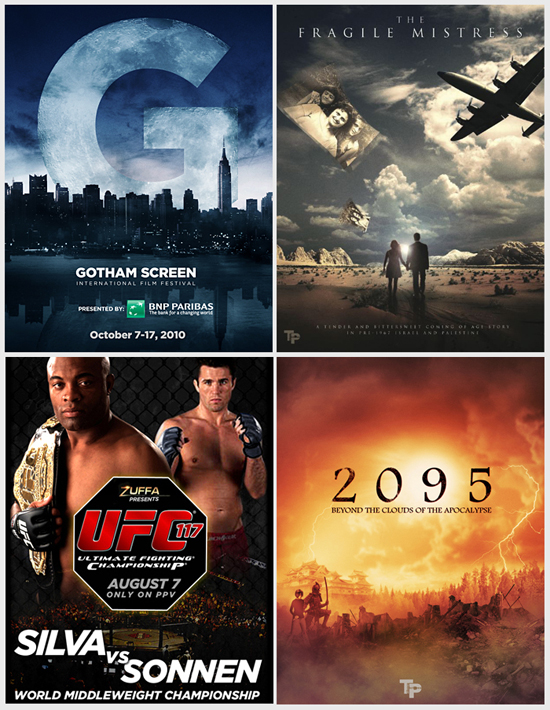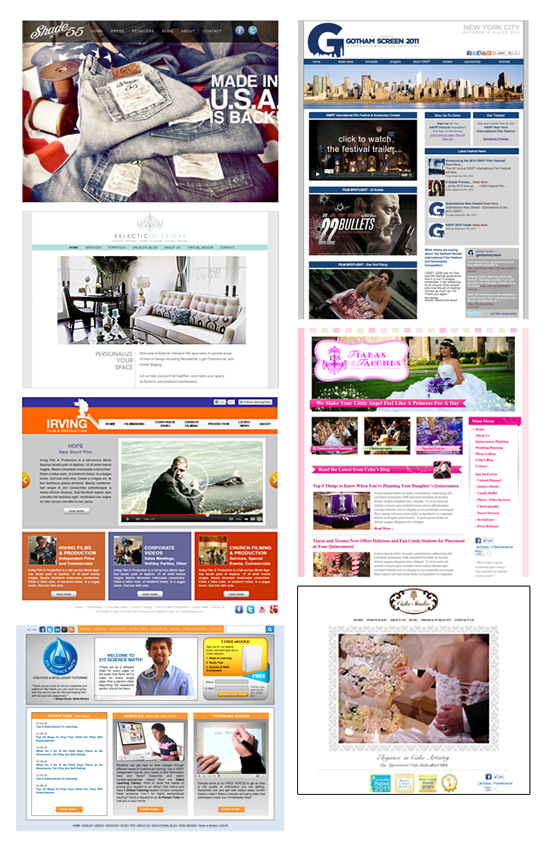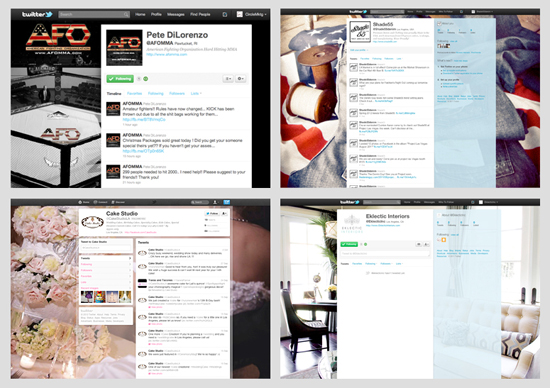Brand Interview: Louis Tanguay, Circle Marketing
Brand Interview: Louis Tanguay, Circle Marketing
How long has your company been in business? Please tell us a bit about your company, its mission, goals…
Circle Marketing was started in 2010 as a way to help the hurting small business community. Small businesses usually have problems with one-person-armies having to work in their business as well as on their business. We provide the services and expertise of an entire 12-person marketing team for a fraction of the cost. We can easily increase most businesses 5-25% within 6-12 months, minimum. Depending on the scope of needs and commitment level from the small business, we can even double the business within 2 years.
Our goal is to take on about 20-30 small businesses every year and work with them exclusively in our tight-knit group.
Do you donate to charities? Tell us about that also and why.
I personally donate my time and energy at some downtown L.A. shelters, but Circle Marketing has not yet had a charitable contribution. That will change in 2012, though, as we will look to make donations to help put unemployed Americans back to work, help the homeless, and look into charities which help disadvantaged/abused women and children find new avenues to a better life.
How did you know what typeface (font) would be right for your company wordmark or logo? If your logo has an illustration, describe why that art was the right thing, animal, place, object, etc…
We chose the Circle Marketing typefaces based on a combination of things. First, we wanted a sans serif font, because we felt that visual style conveyed a more modern and more legible feel. We enhanced the typeface and used two different fonts we had in stock to create a custom face. We chose to have a large, bold and red “CIRCLE” because that’s the basic concept of the company, appearing in many of our promotional materials, like the “Circle of Marketing” and such.
The “Marketing” font is thinner, but still all caps. So, while it is smaller and thinner, it’s not “wimpier.” Also, the “Marketing” word changes in our animated logo which helps the first-time viewer understand a little bit more of what we do.
The circle itself, is more like an eclipse than a perfect circle with a perfect border. This is to add some weight and balance to the entire logo. The sides of the circle are thinnest near the type, and heaviest where there is an absence of type. This varying thickness also helps create a more interesting visual and negative balance, than just a standard circle with a thick border would.
How did you decide on the right color palette to fit your company look and feel?
We wanted to be known for professional and clean marketing. That’s been a personal trait of mine ever since I was a graphic designer in the 90’s. I always felt that a clean look will always trump a busy look. It’s also better for small businesses to look more “professional” when they have a clean and balanced look, as opposed to collages and who-knows-what that the average bargain-basement designer will offer their competitors.
We chose red, because we wanted a POP color. My personal favorite color is green, and I love orange as well, but this company isn’t about me. It’s about our clients, customers and partners. We thought orange would be a great color, because it’s fresh, new, and is an “action” color, but so many companies out there are using orange because of that very reason, that we wanted to stand out from the crowd (like we tell our customers to do). We went with a deep red, because it still has the visual pop we’re looking for, is close to a “lighter burgundy” but not as stuffy and boring, and is striking but not alarming or forewarning like a brighter red would be. When you have a clean and white brand, that could look plain with a plain accent color. Therefore, the red helps add some punch and pop which also helps balance the brand’s essence and communicates our messaging through our visuals.
How did you decide which type of designer to work with, or did you design your own identity and web presence?
Being a former designer, I did the logo and website myself. I prefer to work on my business rather than in my business, because that’s what we encourage our clients to do. However, at the beginning there was only one big client so I had the time before sales kicked into high gear. Our 12 person team, trusted colleagues and designer friends all helped with feedback and suggestions, though, because this is not a dictatorship by any means. I find myself asking more questions to my team and hearing their solutions than I do asking them to “accomplish tasks.” We are truly a “team” environment. I’m just “head coach.”
To your question of how do we decide what designers to work with, we choose our team very carefully on a combination of talent, attitude, and ideas. We want to hire the best of the best, because we want to over-deliver on everything we do. We want only those with that “Can Do!” attitude and those who look for solutions instead of problems, and actively look to discover the best resolutions as opposed to just being told what to do. We want collaborative and creative thinkers, because that makes the company stronger, better, and more able to follow through on our goal over over-delivering.
Best-of-the-Best to us also means that we are looking to find the most talented people with the best mindsets who think creatively, positively, and challenge themselves to a higher standard than anyone else could ever expect of them. I like to know we have a team fully capable of backing up our promise to keep our track record of success to 100% of our clients.
In what order did you present your company to the world? Did you start with marketing and products, or website, blog and social media?
We actually started (like most companies do) with one big client who I already had a relationship with from working with two other companies. We also started with in-person networking through local Los Angeles and Orange County mastermind groups. Since we wanted to help boost small businesses, we went to where the small business owners were going and gave away a bunch of free advice and helped everyone and anyone. Through those efforts, we were able to get our first few clients.
Facebook was the next step. Through our grass-roots Facebook efforts, we were able to acquire a few more clients to stabilize the company and have some great examples for our final step’s Case Studies.
Our final step, and this might be a little backwards, but hey, it worked for us. hahaha. Is to release our full-feature site a few months after we launched. We had only a splash page up in the meantime, however, we did change that splash page as our work portfolio became more impressive. Our work is more about the business and revenue increases than just the visuals. You can show me the prettiest website in the world, but if it doesn’t convert or work on all browers and devices then I would still not be as impressed. To us, “working” is increasing brands and businesses through higher conversion, retention, and repeat-business rates.
How long after the launch of your company did you start pitching in social media?
Almost right away, because it is such a large part of what we do. You can’t do effective and cost-efficient marketing these days without a proper social media strategy and road map. We have had great success with our clients from day one with social media. So far, we have increased client Likes and interaction on Facebook and Twitter by triple figure percentages on average.
Did you do research or study any software, take webinars, teleclasses, before approaching any area of your marketing or web presence?
Generally speaking, we are constantly doing research, and constantly educating ourselves to stay up to date with the latest strategies, tactics and techniques. I personally allocate weekly (sometimes daily) time to check up on news, updates, watch webinars, visit some one-day events, etc.
For individual clients, we obviously must do heavy research on their particular area of the marketplace, do competitive and comparative analyses, and combine those discoveries with our usual process and strategies to create the optimal marketing road map possible for their continued growth in any economy.
Do you advertise locally in newspapers and/or nationally in magazines? Are they effective?
We do not do any print advertising at all. We have found (and advise our clients) that online Pay-Per-Click (PPC) advertising is much more effective and efficient than print advertising. We like to use targeted PPC campaigns which feature extensive split-testing strategies with constant metrics analysis and ad reconfigurations.
There are a few basic rules of thumb for PPC and some of those are: keep the ads varied, split test, and direct Facebook Ads to Fan Pages and not external websites for better ROI. For Search Engine ads, you want to direct to a landing page which has the offer announced in the advertisement, and (in most cases) never direct a search engine PPC to your home page.
Do you advertise online using Google, Facebook or on other company sites? Are they effective?
We currently are doing pay-per-click (PPC) ads, which are highly targeted towards our specific niches, so we are getting maximum “bang for our bucks.” We use a whole slew of Google advertising platforms, as well as Yahoo/Bing and especially Facebook.
Please see answer above for how to make your PPC ads more effective, depending on the platform. Since I have more space here, I’ll throw in another rule of thumb for online advertising, which is actually different from standard statistics philosophy: When you start an ad campaign and come up with sufficient split test ads, make sure you are not spending a large portion of your budget at first. On the contrary, spend something small, like $50 and watch your clicks and conversion rates like a hawk. Once you figure out which ads work best with which landing pages, and optimize your PPC ROI, then you can unleash the proverbial Kraken and enjoy a much more efficient campaign.
When you printed your products, packaging, business cards and other print marketing did you choose an online printer or visit a local vendor?
If the budget allows, we would prefer a local vendor who we’ve worked with before and who can personally advise our printing. However, in the case of business cards and quick trade show flyers, we found that it is much more cost-effective to use online printers. We try not to use too many “cheap” vendors unless the quality is comparable to local printers, or it’s a “throw away” item like a trade show flyer.
Some friendly advice for your readers who are thinking about using online printers: Usually online printers use a printing technique called “gang running,” which means they will paginate many print jobs on the same sheets of paper, and print them all at the same time. This saves time and money, because they can print multiple jobs at once. However, there is no individual control over any one job, which is why it’s very hit-or-miss with half of the online printers out there. Your best bet when using online printers is to use standard CMYK colors which are still acceptable if they slightly shift hues, because they will most likely not be exactly as you see on your screen or print out. Unless absolutely necessary, stay away from the hard to print colors to reduce the possibility of extreme variance from file to finished product.
Did you know anything about different types of papers, when you wanted to print your marketing materials?
Yes, I am well versed in pretty much everything about printing, because I started my design career in a pre-press house (when they existed in the early 90’s) and did my time at various print shops before elevating my career to strictly creative, and then expanding it over the years to be more business development and marketing-centric. I even worked at Kinko’s in the early 90’s, then Sir Speedy Printing, and personally vended out all of my print jobs while working in the film business in the mid-2000’s.
When it came to Circle Marketing, though, we didn’t need anything too extravagant. We are mostly an online business since most effective marketing these days is done through websites, SEO, Social Media, and web video. We don’t have a great need for spending extra money on specialty stocks.
Have you ever used “green” technology in printing, using FSC certified papers or recycled paper and if not, how likely are you at trying this on a next project?
Our business cards are 100% recycled paper, and we do 90% of our invoicing and filing electronically, so that’s kind of a “yes!” We are absolutely in favor of using green technology whenever possible, and some of our clients are hosted on servers powered 100% by green technology.
If you sell products, are they produced in the USA or abroad?
We don’t sell products, but our team is in the United States. We have only worked with American workers right now, as we are very supportive of this nation, and trying to put our country back to work. It’s the call we have made as both business owners as well as proud and caring Americans.
Is there anything you haven’t yet tackled, but will want to do soon?
We have just started to offer Mobile Apps. We are doing both iPhone Apps and iPad Apps. We have a few clients who are asking for those, so we picked up a mobile app designer/developer, and are looking to increase our abilities in that area. Mobile devices are fast becoming the standard for all communications, and owning a company allows me to also be the navigator. I am constantly going to navigate this company to where things are going, not just where things are. There’s a famous quote from the greatest hockey player to ever live, Wayne Gretsky. When a reporter asked him “Why are you so good?” Gretsky replied, after humbly thanking him for the compliment, “I skate to where the puck is going to be, not to where it is.”
That’s what all business owners, especially small business owners, should be thinking about. When you only focus on what you’re currently offering, and just try to tread water, then you’re going to get swept away with the tide and your business will at best plateau, or worse, be left behind. However, if you keep moving, keep improving, and keep changing (something only a small percentage of your competitors are doing), then you’re positioning yourself to have a good look at the goal…all you have to do is slap-shot that baby in the net!
Circle Marketing Marketing Video:
To learn more about Louis Tanguay, and Circle Marketing, visit the links below:
Website: CircleMarketing.com
Facebook: Facebook.com/CircleMktg
Twitter: Twitter.com/CircleMktg
YouTube: YouTube.com/CircleMarketing
LinkedIn: LinkedIn.com/in/Tanguay
“Border Break” Trailer: http://youtu.be/GFPA8sZBwIE
- Brand Interview: Tim R. Green, Author and President, Referral Institute of Michigan
- The Don’t DIY Business Plan


